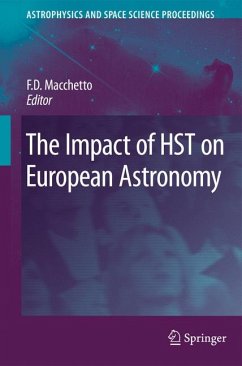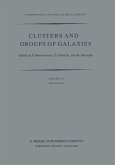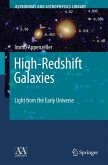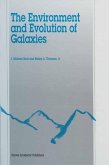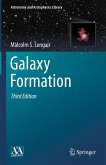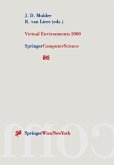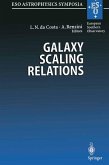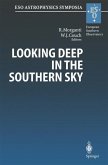The Impact of HST on European Astronomy (eBook, PDF)
Redaktion: Macchetto, F. Duccio


Alle Infos zum eBook verschenken

The Impact of HST on European Astronomy (eBook, PDF)
Redaktion: Macchetto, F. Duccio
- Format: PDF
- Merkliste
- Auf die Merkliste
- Bewerten Bewerten
- Teilen
- Produkt teilen
- Produkterinnerung
- Produkterinnerung

Hier können Sie sich einloggen

Bitte loggen Sie sich zunächst in Ihr Kundenkonto ein oder registrieren Sie sich bei bücher.de, um das eBook-Abo tolino select nutzen zu können.
The Hubble Space Telescope has facilitated major contributions to a wide range of topics in astronomy:
The study of nearby planets The processes of star and planet formation The stellar and interstellar components of galaxies The discovery that most, if not all, galactic nuclei harbor a massive black hole that profoundly affects their evolution The realisation that the universe as a whole is undergoing acceleration as a result of a yet unknown form of "dark energy".
This volume offers a broad perspective of the advancements made possible by the HST over its almost two decades of…mehr
- Geräte: PC
- ohne Kopierschutz
- eBook Hilfe
- Größe: 11.79MB
![Clusters and Groups of Galaxies (eBook, PDF) Clusters and Groups of Galaxies (eBook, PDF)]() Clusters and Groups of Galaxies (eBook, PDF)40,95 €
Clusters and Groups of Galaxies (eBook, PDF)40,95 €![High-Redshift Galaxies (eBook, PDF) High-Redshift Galaxies (eBook, PDF)]() Immo AppenzellerHigh-Redshift Galaxies (eBook, PDF)73,95 €
Immo AppenzellerHigh-Redshift Galaxies (eBook, PDF)73,95 €![The Environment and Evolution of Galaxies (eBook, PDF) The Environment and Evolution of Galaxies (eBook, PDF)]() The Environment and Evolution of Galaxies (eBook, PDF)73,95 €
The Environment and Evolution of Galaxies (eBook, PDF)73,95 €![Galaxy Formation (eBook, PDF) Galaxy Formation (eBook, PDF)]() Malcolm S. LongairGalaxy Formation (eBook, PDF)57,95 €
Malcolm S. LongairGalaxy Formation (eBook, PDF)57,95 €![The Interstellar Medium in Galaxies (eBook, PDF) The Interstellar Medium in Galaxies (eBook, PDF)]() The Interstellar Medium in Galaxies (eBook, PDF)40,95 €
The Interstellar Medium in Galaxies (eBook, PDF)40,95 €![Galaxy Scaling Relations: Origins, Evolution and Applications (eBook, PDF) Galaxy Scaling Relations: Origins, Evolution and Applications (eBook, PDF)]() Galaxy Scaling Relations: Origins, Evolution and Applications (eBook, PDF)40,95 €
Galaxy Scaling Relations: Origins, Evolution and Applications (eBook, PDF)40,95 €![Looking Deep in the Southern Sky (eBook, PDF) Looking Deep in the Southern Sky (eBook, PDF)]() Looking Deep in the Southern Sky (eBook, PDF)73,95 €
Looking Deep in the Southern Sky (eBook, PDF)73,95 €-
-
-
- The study of nearby planets
- The processes of star and planet formation
- The stellar and interstellar components of galaxies
- The discovery that most, if not all, galactic nuclei harbor a massive black hole that profoundly affects their evolution
- The realisation that the universe as a whole is undergoing acceleration as a result of a yet unknown form of "dark energy".
This volume offers a broad perspective of the advancements made possible by the HST over its almost two decades of operation and emphasises their impact on European astronomical research. These proceedings of 41st symposium in the ESLAB series of the European Space Agency collect the oral and poster papers that were presented and discussed during the meeting.
Dieser Download kann aus rechtlichen Gründen nur mit Rechnungsadresse in A, B, BG, CY, CZ, D, DK, EW, E, FIN, F, GR, HR, H, IRL, I, LT, L, LR, M, NL, PL, P, R, S, SLO, SK ausgeliefert werden.
- Produktdetails
- Verlag: Springer Netherlands
- Seitenzahl: 312
- Erscheinungstermin: 14. Januar 2010
- Englisch
- ISBN-13: 9789048134007
- Artikelnr.: 37410799
- Verlag: Springer Netherlands
- Seitenzahl: 312
- Erscheinungstermin: 14. Januar 2010
- Englisch
- ISBN-13: 9789048134007
- Artikelnr.: 37410799
- Herstellerkennzeichnung Die Herstellerinformationen sind derzeit nicht verfügbar.
